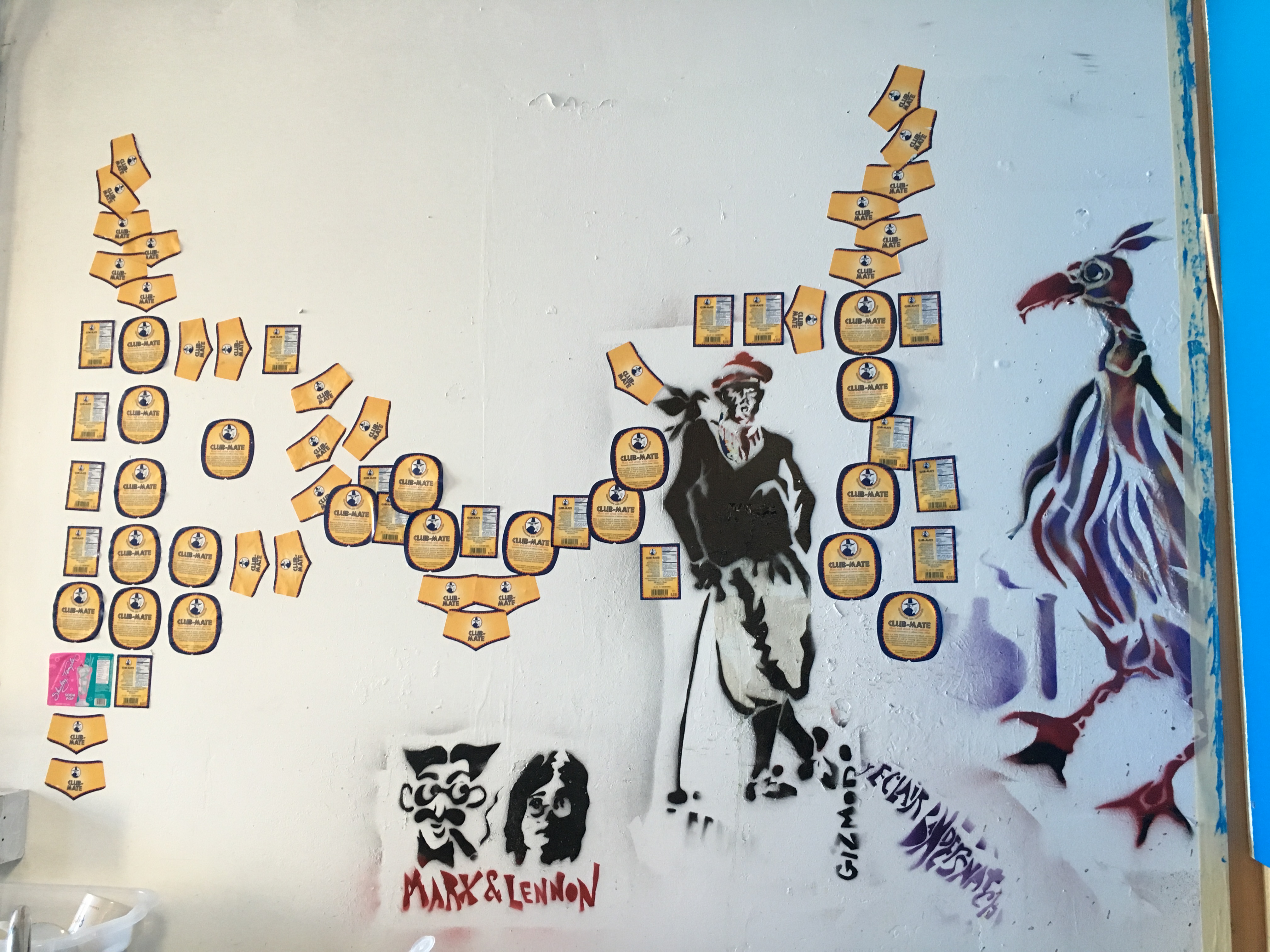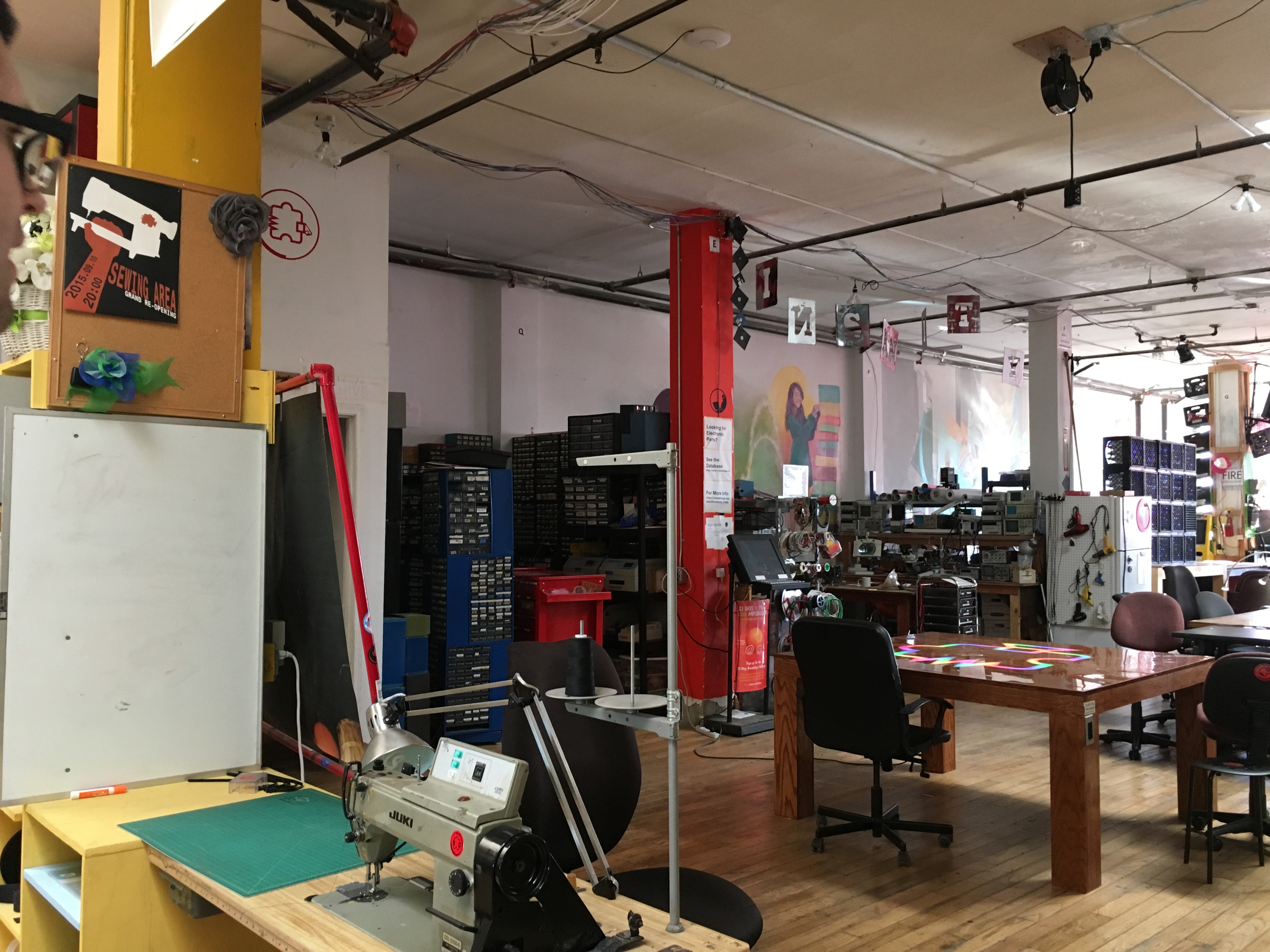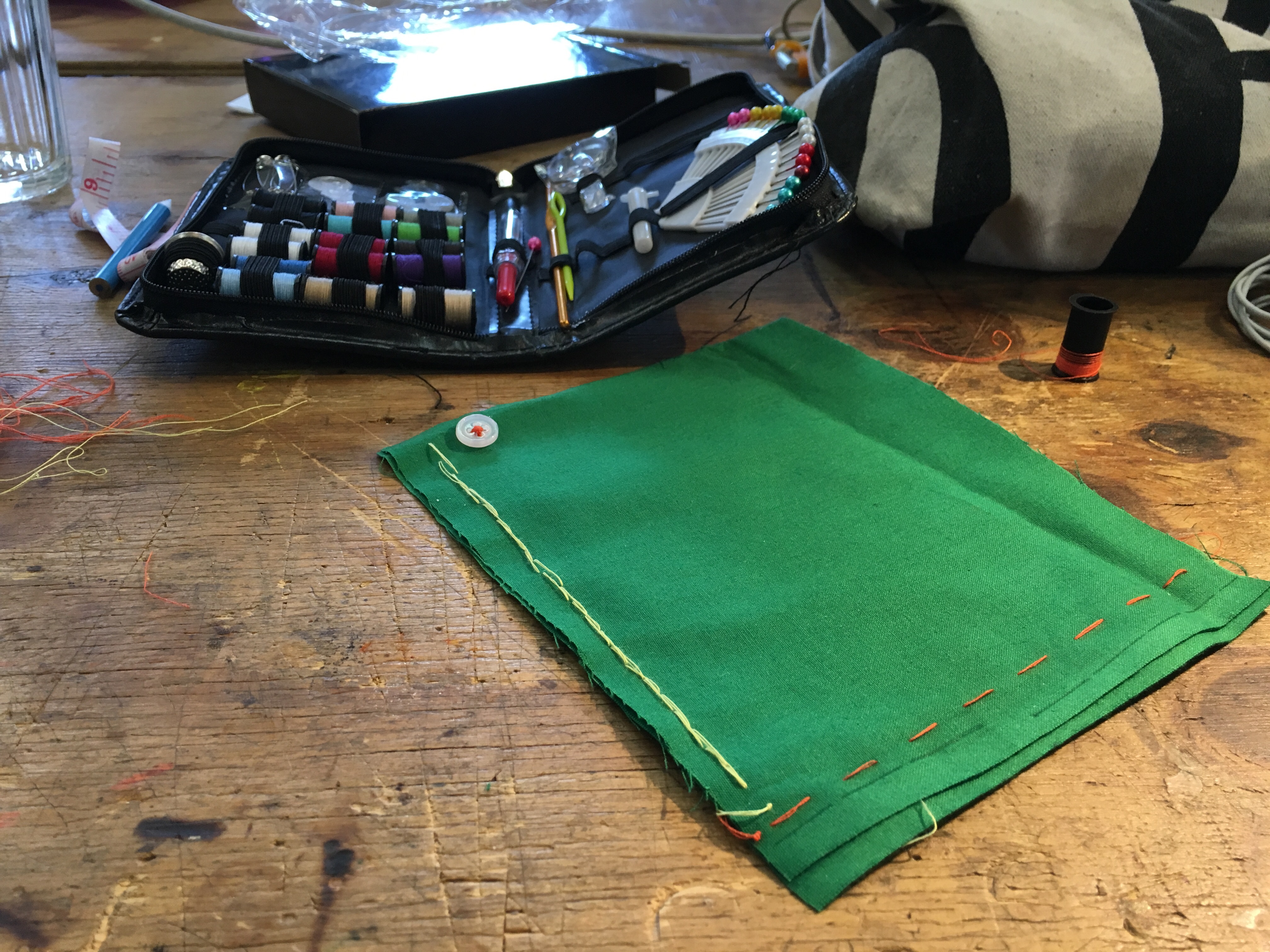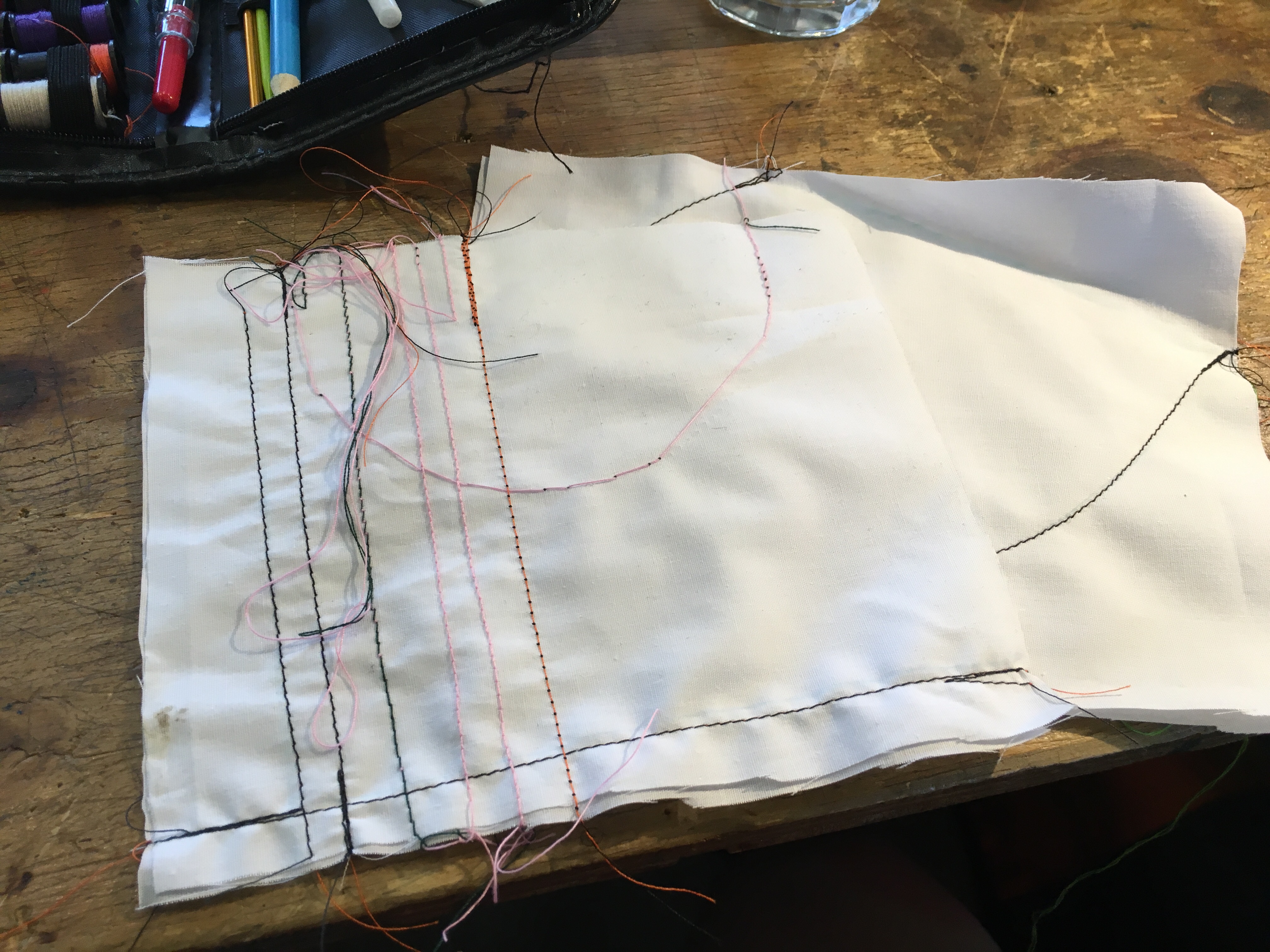Last week, I went to San Francisco for work. Traveling is always exhausting, so that’s where most of my spoons went.
Noisebridge
One fun thing was getting to visit Noisebridge - first time I’d been. The space was big, bright, and friendly. They had some good murals on the wall, among other things…




Sewing
On Saturday I took an intro-to-sewing class at NYC Resistor. Thanks Becky for an awesome class!


Becky gave us an intro to both hand and machine sewing. I made a couple of test swatches!
I had two new year’s resolutions for 2016:
- do fewer big projects
- learn to use a sewing machine
So this was v. exciting. I think I need to complete a tiny project before I can say I’ve really “learned” to use a sewing machine, but this is a step in the right direction! Now I get to wander around fabric.com and ponder what I want to do next.
Books
No proper books right now, but I’m caught up with Unsong Book. Kabbalistic sci-fi! I’m a fan so far.
Linkspam
Leigh Honeywell’s post No more rockstars: How to stop abuse in tech communities is fantastic and horrible and good. It has lots of advice for actively making your community better/safer. Please read it. I want to take this paragraph and highlight it and print it out, because it’s so frustratingly familiar:
Sometimes rock stars don’t outright break the rules, they just push on boundaries repeatedly, trying to figure out exactly how far they can go and get away with it, or make it so exhausting to have boundaries that people stop defending them. For example, they might take a little too much credit for shared work or other people’s work, constantly bring up the most disturbing but socially acceptable topic of conversation, resist de-escalation of verbal conflict, subtly criticize people, make passive-aggressive comments on the mailing list, leave comments that are almost but not quite against the rules, stand just a little too close to people on purpose, lightly touch people and ignore non-verbal cues to stop (but obey explicit verbal requests… usually), make comments which subtly establish themselves as superior or judges of others, interrupt in meetings, make small verbal put-downs, or physically turn away from people while they are speaking. Rock stars feel entitled to other people’s time, work, and bodies – signs of entitlement to one of these are often signs of entitlement to the others.
Ring Theory is a post I very much love, about how to balance emotional needs across social networks. “Comfort in; dump out,” or in other words, the person at the center of a crisis shouldn’t be the recipient of your kvetching.
Here are the rules. The person in the center ring can say anything she wants to anyone, anywhere. She can kvetch and complain and whine and moan and curse the heavens and say, “Life is unfair” and “Why me?” That’s the one payoff for being in the center ring…Everyone else can say those things too, but only to people in larger rings.
Awk is one of those tools that I can kinda-sorta use, but always need references for, so I liked Hackaday’s GAWKING TEXT FILES post.
Loving this tweetstorm by @stubbornella about agile software development practices.
There’s no such thing as a safe city for queer people, by Saeed Jones, is a piece from 2013 that is still painfully relevant.
Sam Levin writes about the corporate awkwardness of SF pride.
InfoQ has some tips for dealing with issues in microservices. TLDR; lots of things can go wrong!
The point is that monitoring wise, the system becomes highly fragmented and a stronger need arises for centralized monitoring and logging, to have a fair shot at understanding what’s going on…
AOL’s How-to-Internet book is good for a few laughs.
http.cat is pretty self-explanatory.

